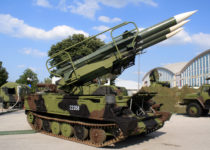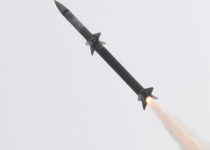India’s SLBM Program Is Opening Up A Plethora Of Opportunities For The Rest Of The Country’s Armed Forces (Updated)
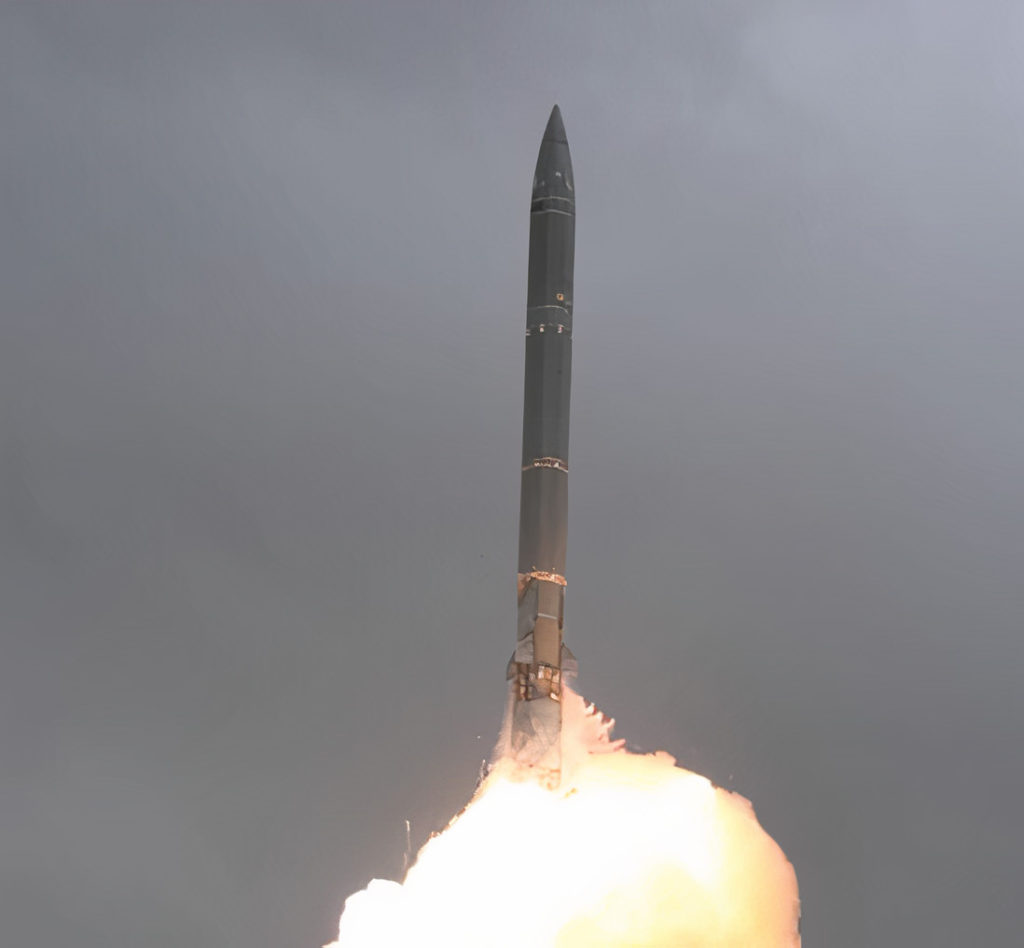
India, after having successfully deployed the Agni series of ballistic missiles, has now embarked upon the development of the K series of ballistic missiles that, being more compact than the Agni series, can be launched from submarines. K series has been named after Dr. A P J Abdul Kalam, widely regarded as the father of India’s rocket and missile programs. While the Agni series missiles, deployed in road and rail mobile launchers, have completed the ground based arm of India’s nuclear triad, the K series missiles will be completing the sea based arm, and as I will describe in this post, will likely contribute to the air launched arm of the country’s nuclear arsenal as well.
But their compactness, and the ability to be stored in canisters for long periods of time until the launch, means that apart from the strategic nuclear forces, many other arms of the Indian defense forces are also benefiting from the spin off versions of these missiles, improving the capabilities of the armed forces in many spheres. In this post, I describe the different missiles in the K series and what non nuclear uses they are being put to.
The K-15 led to Shaurya, Pralay, SMART, And In Future Could Carry Hypersonic Scramjet Vehicles Too
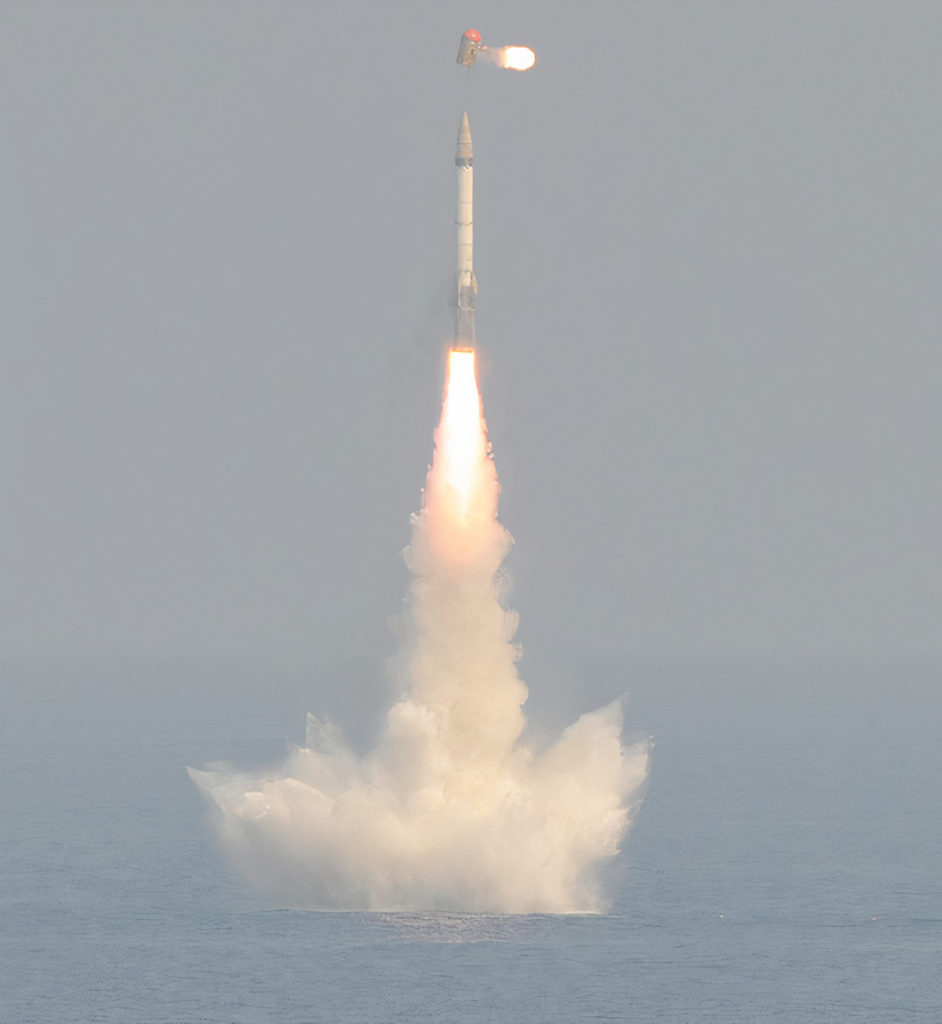
The first submarine launched missile to be tested by India was the K-15, a missile with a stated range of 700 km and a maximum speed of Mach 7. With this range, K-15 can provide only limited nuclear deterrence. Nonetheless, it was a significant milestone in India’s missile development program. And development of K-15 was not the end goal. Rather, K-15 was a stepping stone to more sophisticated, longer range SLBMs (Submarine Launched Ballistic Missiles) like the K-4, K-5, and possibly K-6 as well.
But the K-15 has had spin off variants that are proving to be truly useful. One variant is Shaurya, which is nothing but the land launched variant of K-15. And just like K-15, it has a range of 700 km and max speed of Mach 7. Due to its small size and canisterized storage, the Shaurya can be easily carried around and hidden from the enemy reconnaissance platforms right until launch. It can either be launched from fixed silos, or from a TEL (Transporter Erector Launcher).
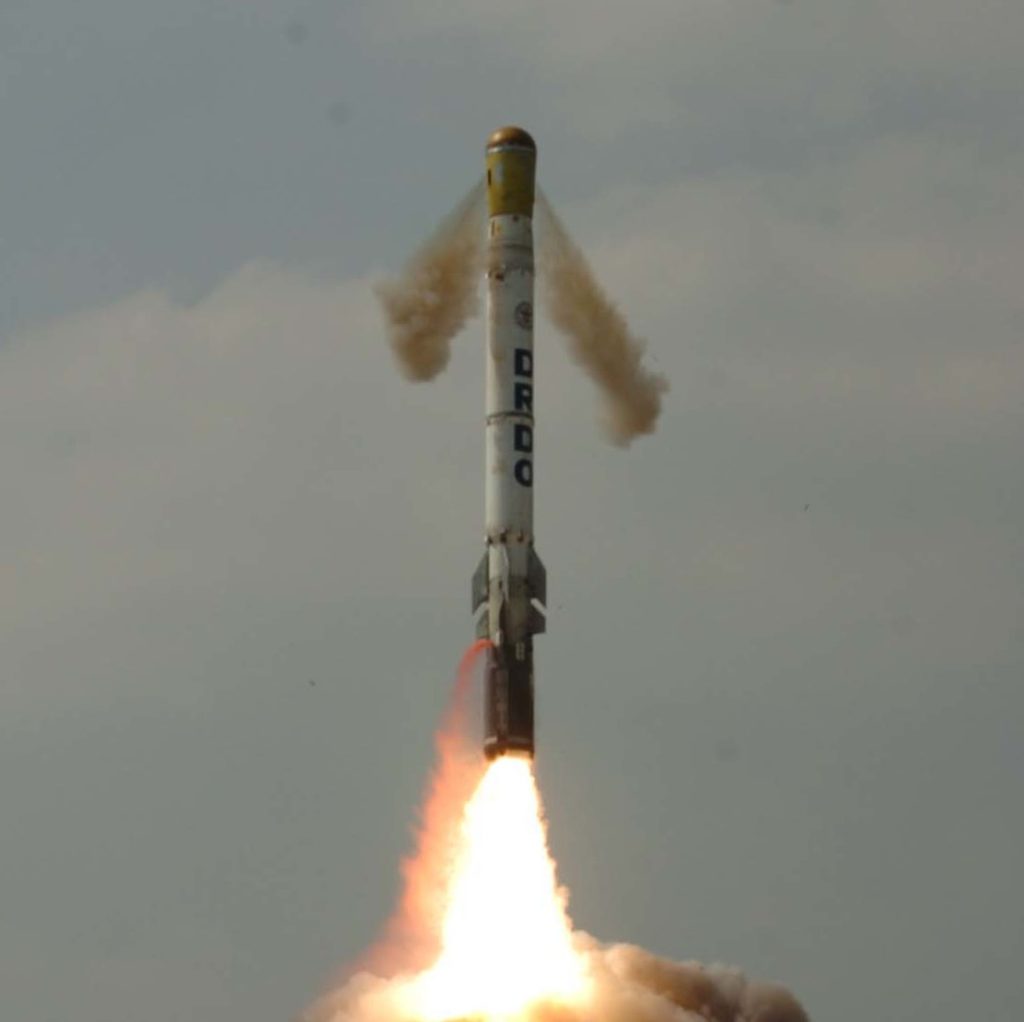
Though technically a 700 km range ballistic missile, the K-15, and hence all its other variants, are designed to fly within the atmosphere at an altitude of 40 km, and be maneuverable. This makes them very hard to shoot down. And while their stated range is 700 km, the range of a missile often varies according to the size and weight of it’s payload. And as per this post, if fitted with India’s 17 kiloton fusion boosted fission nuclear warhead, that weighs just 180 kg, the range of K-15/Shaurya could go up to 1,900 km. However, there is no official confirmation that such a long range could be achieved by this missile.
There are also rumors, that India planned to use the medium transport aircraft under development to air launch a variant of K-15 from its rear cargo door, using a parachute to drag it out of the aircraft. This would have been similar to the test launch of a Minuteman ICBM (Intercontinental Ballistic Missile) from a C-5 Galaxy in 1974 by the US. However, with the medium transport aircraft program now cancelled, it is rumored that the An-32s of Indian Air Force are being configured for this use. The K-15s air launched from these aircraft will likely be nuclear armed too, and will provide another means of nuclear deterrence. With time, we will know if such efforts are indeed under way.
But India wants to use K-15/Shaurya class missiles not just for nuclear strike role, but for conventional strikes as well. And for this, the DRDO has been developing the Pralay missile. There is no photo of the Pralay in public yet. So there are speculations about its origins. Some say that it is based on the Prithvi missile. This is because the Prithvi is the ballistic missile India has so far deployed for conventional strikes, and Pralay, being solid fueled with an advanced, more efficient propellant, is supposed to replace the old, liquid fueled Prithvi.
However, if the diagram of the Pralay missile in the image below is anything to go by, the Pralay is going to be nothing but the conventionally armed variant of the K-15. Notice the similarity of the Pralay’s overall structure, and the shape of its nose and fins, to that of the K-15 and Shaurya missiles in images above, the SMART missile in the title image of this post (in which case the upper set of fins is still folded), and the Shaurya missile carried by its TEL in the later section of the post. This image is from an official DRDO poster advertising the development of an advanced propellant for the Pralay, at a recent arms exhibition in India.
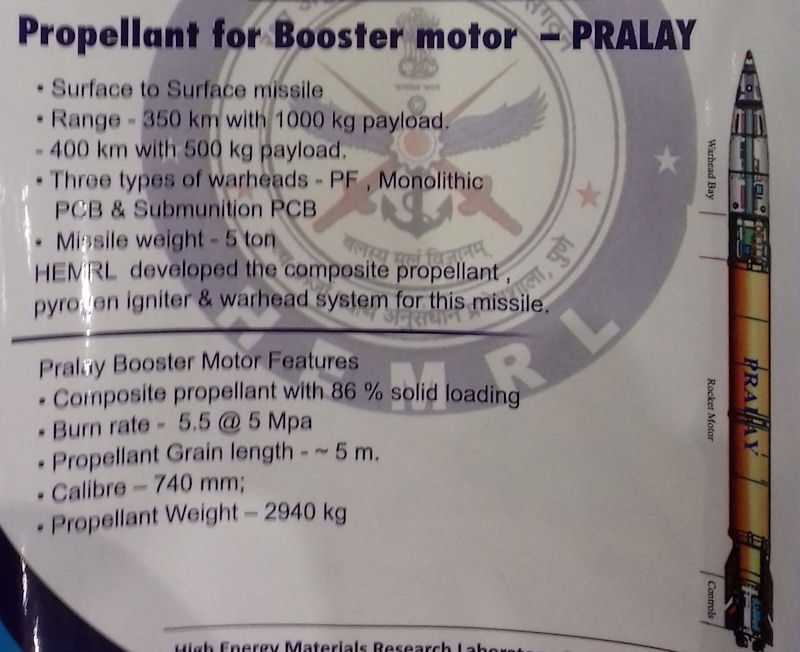
If Pralay is indeed the conventionally armed variant of K-15, it will be carrying multiple different types of conventional warheads for various missions. For example, PF (Preformed Fragmentation) submunition warhead carries multiple bomblets, that would be dispersed over a wide area and spray sharpnels in all directions on exploding. PF submunition warhead would be effective against soft targets like railway wagons, trucks, air defense sites, and aircraft parked on the tarmac. Monolithic PCB (Penetration Cum Blast) warhead is just a regular bomb carrying high explosives, that could be effective against very hardened targets like underground bunkers.
Submumition PCB warhead will carry multiple, rocket propelled submunitions, that will penetrate concrete structures like buildings and runways, and explode after penetration, causing severe structural damage. Being able to spread over a wide area, these submunitions could damage even large, sprawling buildings. Incendiary submunitions burn at high temperature, setting inflammable targets like fuel depots on fire. DBCI bomblet submunitions are optimized to nutralize armored vehicles like tanks and armored personal carriers. And then there are hybrid warheads that carry various combinations of these different types of submunitions for various missions. For example, a mixture of PCB submunitions and incendiary submunitions could be used to take out hardened fuel depots.
Such submunitions spread over a large area, enabling the missile to neutralize even dispersed targets. These different warheads are already in use with Prithvi. You can read more about them and the Prithvi and Pralay missiles here. Pralay is stated to have a range of 350 km if carrying a 1000 kg warhead, and 500 km if carrying a 500 kg warhead. Its max speed is stated to be Mach 6. Being a derivative of the K-15, Pralay too can fly within the atmosphere at an altitude of about 40 km, and perform maneuvers, making it very hard to detect and intercept.
Pralay will complement the Brahmos in attacking land targets inside enemy territory. Being a cruise missile, Brahmos is smaller and cheaper, enabeling it to be carried in larger numbers per launcher and also expended in larger numbers. But Brahmos carries a mare 200 kg warhead, which is too small to carry meaningful amounts of submunitions. This limits the variety of ground targets it can engage. Pralay therefore will engage targets that Brahmos can’t, like those dispersed over very wide areas, and hence needing submunitions to nutralize. You can read more about Brahmos in this post of mine.
The next missile, that from its external appearance seems to be yet another variant of the K-15, is a very peculiar one. Called the SMART (Supersonic Missile Assisted Release of Torpedo), its essentially a ballistic missile that carries a torpedo as its payload, and is being developed as a standoff antisubmarine weapon. The video below shows its recent test launch from Dr. A P J Abdul Kalam island in Orissa.
The missile carries a light weight torpedo called ATL (Advanced Torpedo Light), also called Shyena. It is believed to have a max speed of 60 km/h and a range of around 15 km. To use the missile, the enemy submarine would first need to be located from a standoff distance. This could be done using antisubmarine platforms like Boeing P-8I maritime petrol aircraft, MH-60 naval multirole helicopter, Kamorta class corvettes, and a vast sonar network comprising of Indian sonar network, the US SOSUS network, and the Japanese Fish Hook network. In near future, under water drones could also play the role of scouts locating enemy submarines for these missiles.
Once the submarine is located, the missile would be launched. Being a ballistic missile, it might take some time to reach its max speed of Mach 6-7. But it would still cover its max range of 660 km in just over 5 minutes. This means a time sensitive target like a submarine will have very little time to change its location substantially after the missile is launched at the location in the ocean where it was detected. Once the missile reaches that region of the ocean, it will release the torpedo in air.
The descent of the torpedo will then be slowed down by parachute. Once in water, the torpedo will do its job of locating and hitting the submarine. The 15 km range of the torpedo would help intercept the submarine even if it has changed its location since the missile launch to some extent. Moreover, the missile might also be capable of mid course guidance, so that the updated location of the submarine could be fed to it as it travels to the target area. This missile will be a very useful tool in antisubmarine warfare, as it combines the range and speed advantages of a ballistic missile with the antisubmarine capabilities of a torpedo.
There are torpedo carrying missiles in use by other navies as well. But none of them come anywhere close to the range and speed of SMART. For example, the RUR-5 ASROC had subsonic speed and a range of 9.7 km. The UUM-125 Sea Lance that was supposed to replace it but got cancelled, would have had Mach 1.5 speed and 185 km range. The Russian RPK-6 Vodopad has subsonic speed and a range of 96 km. And the Japanese Type 7 antisubmarine rocket has supersonic speed and a range of 30 km. The SMART, on the other hand, has a speed of Mach 6-7 and a range of 650 km.
But what would be the launch platforms of this missile? The general discussion surrounds its potential use from ships. And ships might very well be one of the platforms it can be launched from. Because a ship launched variant of the Prithvi missile, called the Dhanush, has already been developed by India, and test launched from multiple ships of the Indian Navy, like INS Subhadra and INS Rajput. But Dhanush is meant only for antiship and land attack roles, not antisubmarine role.
However, there are two other platforms that could be used to launch SMART, based on the fact that SMART is of the K-15/Shaurya pedigree. Firstly, the K-15, having been developed as an SLBM, has been test launched from, and is currently carried by, INS Arihant, India’s first ballistic missile nuclear submarine. Since SMART is essentially a variant of K-15, it can theoretically be launched from ballistic missile submarines like Arihant as well. Arihant can carry 12 K-15 missiles at a time, and could therefore carry 12 SMART missiles for antisubmarine missions as well.
Right now though, Arihant is unlikely to be used in this role. Because it is currently the only ballistic missile submarine in the Indian Navy, and is needed for nuclear deterrence missions. However, a whole host of new, larger ballistic missile submarines will soon be entering service with Indian Navy, with INS Arighat slated to be inducted within a year. And these submarines will carry the much longer range K-4 and K-5 missiles, instead of the K-15. They will also carry many more missiles than the smaller Arihant can. At that stage, Arihant could be freed from its nuclear deterrence missions, to carry out antisubmarine missions using a formidable payload of 12 SMART missiles.
Another platform that SMART seems designed to be launched from is a truck based TEL (Transporter Erector Launcher). This is because Shaurya, which is the land launched variant of the K-15, is also carried by a Tatra truck based TEL, as you can see in the image below. This is the very same TEL that was used to test launch the SMART missile, as is evident in the video of the test launch.
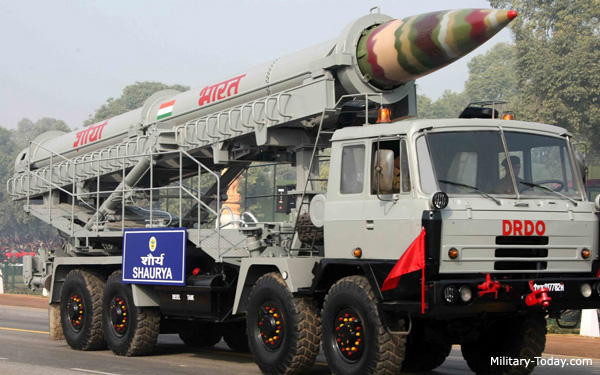
The green camo paint of the SMART missile as well as its TEL in the video, further suggests that the test launch was carried out from the TEL not just as a stepping stone for later test launches from ships and submarines, but because SMART will likely be carried not just by ships and submarines, but by TELs on the coast as well. What remains to be seen is how accurate the targeting info for the enemy submarine will be, on the basis of which the SMART missile would be launched from hundreds of kilometres away.
If this targeting info is less than adequate for a single missile to take out the submarine, multiple SMART missiles will likely be launched, to cover a large enough area of the ocean where the submarine is lurking, to ensure a decent kill probability. If on the other hand, the targeting info is adequate, a single missile could be sufficient.
With time therefore, as India’s antisubmarine surveillance systems mature, the number of missiles that have to be fired to ensure a decent kill probability against a submarine will gradually go down, making the system more and more cost effective. Although expending even multiple missiles is worth it if it takes out even one enemy submarine, considering the cost of expending those missiles for India compared to the cost of losing the submarine for the enemy.
SMART could technically also be used against surface ships. But it’s not clear if it is intended to be used that way. One advantage of using the missile in that role is that the torpedo would essentially bypass the CIWS measures of the enemy ship, like short range missiles, guns, and directed energy weapons, that most antiship missiles have to deal with. It would similarly be immune to EW measures as well.
But the immense speed of ballistic missiles like K-15 could itself render the CIWS measures of enemy ships useless, even if the missiles attempt to directly hit the ship instead of releasing a torpedo in its vicinity. In fact, a variant of SMART fitted with an onboard radar could be used in antiship role. Although it’s not publicly known if India intends to do this.
The next potential application of K-15 is as a vehicle to launch scramjet powered hypersonic cruise missiles. This is because India’s HSTDV (Hypersonic Technology Demonstrator Vehicle) has been tested using the Agni 1 missile as its launch vehicle. Agni 1 has range and speed similar to that of K-15. But being an older missile, it does not incorporate the latest technologies that make K-15 more efficient. Its possible that Agni 1 was used to launch HSTDV just for test, and the final version of the hypersonic cruise missile will carry a much smaller booster, to be air and ship launched like Brahmos.
This is because India’s SFDR (Solid Fuel Ducted Ramjet) missile has also been tested using a booster to carry it to sufficient altitude and speed. But the final version of this missile will be launched without the booster from a fighter jet, with the aircraft itself providing the necessary altitude and speed to it. However, there are distinct advantages of using a missile like the K-15 as a booster for hypersonic cruise missiles. The K-15 can easily take the hypersonic payload out to a range of over 600 km, from where the hypersonic missile can get seperated and cover another roughly 600 km powered by its scramjet engine. This could give the missile a total range of around 1,200 km.
K-15, being able to flywithin the atmosphere and maneuvre, will itself be difficult to shoot down. And the hypersonic cruise missile will similarly be low flying and maneuverable. Such a hypersonic cruise missile that uses the lower stages of K-15 for initial boost could be a very potent weapon to use against targets like air defences, command and control nodes, ships, and possibly even large aircraft in air to air role.
A rough example of using an existing ballistic missile as booster for a hypersonic maneuverable payload is China’s DF-17, which uses the initial stages of the DF-16B ballistic missile to propel a hypersonic payload to necessary altitude and speed. Although the hypersonic payload in that case is an unpowered boost glide vehicle, not a scramjet powered cruise missile.
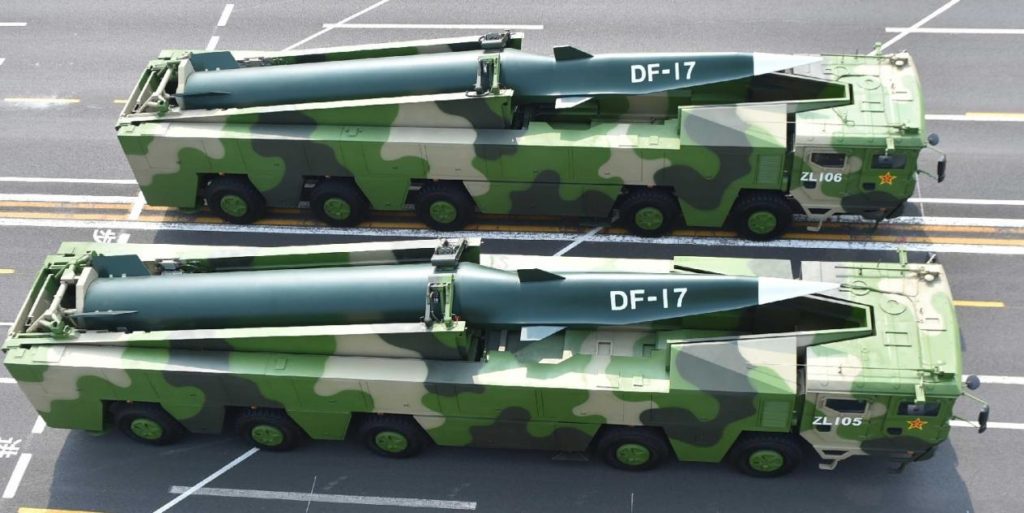
The K-4 Missile Has Helped In Development Of India’s ASAT Missile
Back in 2012 when Agni 5 had been test launched for the first time, the Director-General of Defence Research and Development Organisation had stated that Agni 5 could in future be used not just for nuclear deterrence, but to shoot down enemy satellites and to launch minisatellites during war as well. So far however, no such variants of Agni 5 have been observed in public. All the photos of the missile show it carrying the same conical warhead, whose black colored heat resistant coating shows that it is a unitary nuclear armed re-entry vehicle, not a satellite or antisatellite payload.
The heat shield is required for the warhead to withstand the tremendous heat generated due to air friction during atmospheric reentry. You can read more about this phenomenon in this post of mine, where I describe it in context of the 400 km range 40N6E missile of the S-400 system.
However, not many know that the next missile in the K series, namely K-4, is actually the basis for the ASAT (Anti Satellite) missile that recently shot down an experimental satellite at an altitude of 300 km in a test launch, called Mission Shakti. K-4, an IRBM (Intermediate Range Ballistic Missile), is stated to have a range of 3,500 km, and going by its Agni series counterpart, namely Agni 3, it likely has a max speed of Mach 16. The video below shows one of its test launches from an underwater pontoon.
K-4 will be nuclear armed and carried by India’s ballistic missile submarines for nuclear deterrence missions. And as per reports, unlike the Agni series, K-4 and the subsequent K-5 will carry MIRVs (Multiple Independently Targetable Re-entry Vehicles), which will enable them to carry multiple nuclear warheads and make it more survivable against ballistic missile defenses. They are also stated to be able to maneuvre in 3 dimensions, further increasing their survivability. But as this post explains, the ASAT missile recently tested is actually nothing but a variant of the K-4 that carries an ASAT payload, instead of nuclear armed MIRVs.
Specifically, the red part of the ASAT missile are the stages of K-4 missile that carry the ASAT payload (the white tip) to the altitude where it would engage the target satellite. This suggests that since the K series of missiles are a more advanced succession of the old Agni series, a decision was made to use the K-4, instead of Agni 5, for use in ASAT missions. This ASAT missile is actually meant for use not just an ASAT missile, but also as an anti ballistic missile that forms a part of India’s ballistic missile defense system.
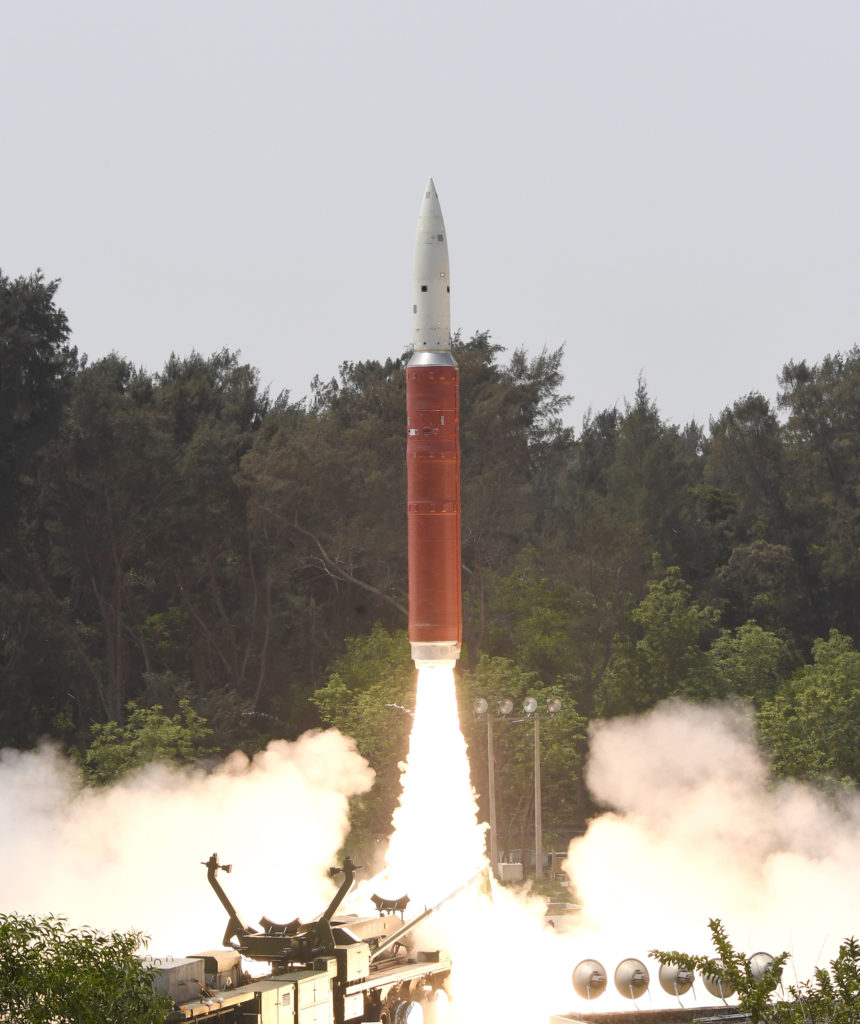
A Variant Of The K-5 Will Likely Be Used For Urgent Satellite Launches
While the stages of K-4 have been used for the development of the ASAT missile, the other stated future use of Agni 5, namely launching minisatellites, has not been heard of since. Its likely though, that a variant of the K-5 would be used to perform this mission. K-5 is an ICBM (Intercontinental Ballistic Missile) currently being developed, and is supposed to be the successor to Agni 5.
Like Agni 5, the K-5 will have a range of over 5,000 km (as per India) and 8,000 km (as per China). And going by the specs of Agni 5, it will have a blistering max speed of Mach 24. This, along with the ability to maneuver and carry MIRVs, will make it extremely hard to shoot down. Like K-15 and K-4, K-5 also will be an SLBM with a likely land launched variant to replace the Agni series.
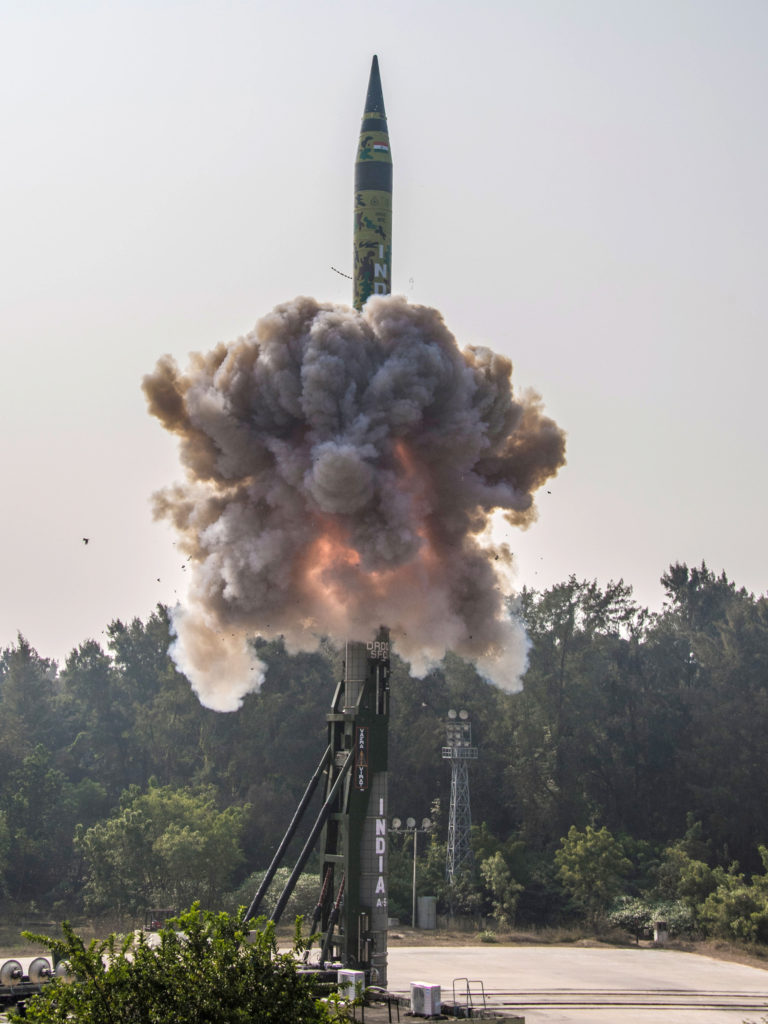
Just like in case of ASAT missile being based on the K-4 instead of Agni 5, a decision has likely been made to use a variant of the K-5 for launching minisatellites. This capability is valuable, as commercial rockets need sprawling space ports to launch satellites, and these space ports could be preemptively targeted by the adversary in a war. In such a scenario, if the major satellites are also shot down by the adversary, it would be useful to launch minisatellites that could fulfill the role of the lost satellites to some extent.
And these light weight minisatellites wouldn’t require giant rockets. Instead, they could be launched from easy to hide TELs using a K-5 variant. The video below shows a Russian Topol M system, which is traditionally meant to launch nuclear armed ICBMs, launch a satellite. This is basically what India plans too.
As for the kind of satellites the adversary could shoot down, GPS and communication satellites are way too high for ASAT missiles to engage. GPS satellites orbit at an altitude of 22,000 km, while communication satellites orbit even higher at 35,000 km. That’s more than twice the diameter of the earth itself! However, most of the spy satellites orbit at just a few hundred km altitude. These are the satellites that could be shot down, and therefore would need to be replaced in a war the most.
The K-4 and K-5 missiles have not been clearly shown to the public so far. But their their tip will likely resemble not the sharp, black tip of Agni missiles, but the blunt, normally painted tip of MIRV carrying missiles like Trident and Polaris. This is because like Trident and Polaris, the K-4 and K-5 will also most likely carry MIRVs inside their tip, instead of a unitary warhead like the Agni series.
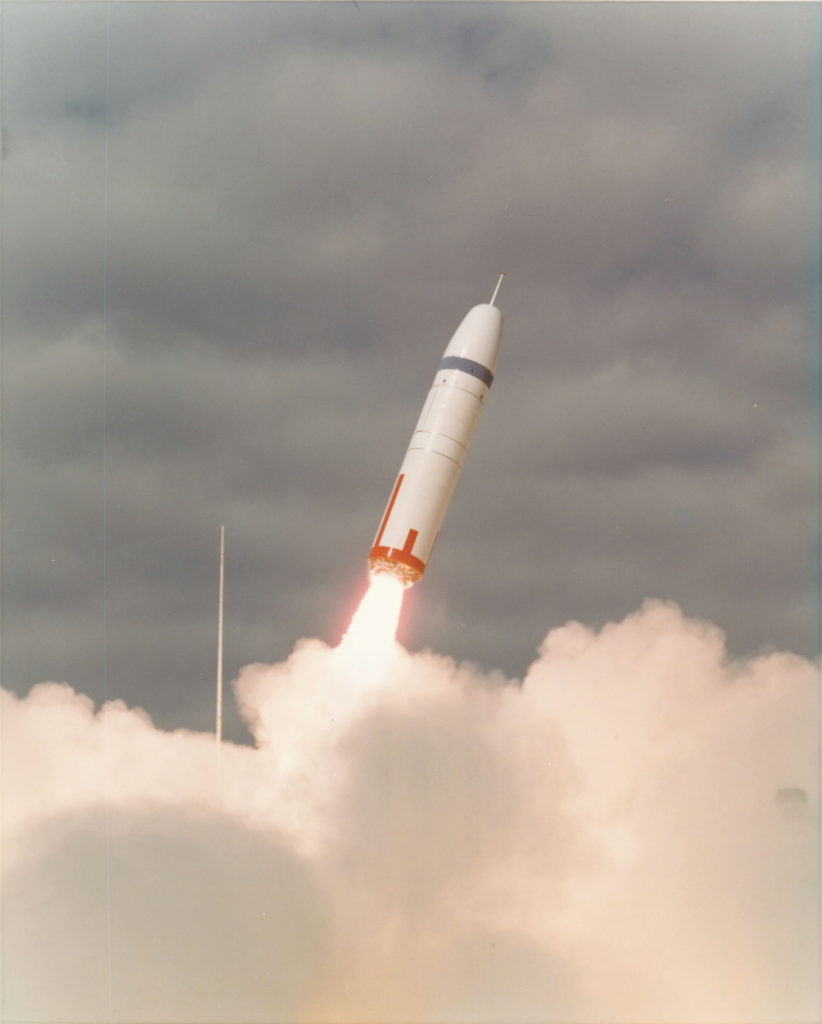
The diagram below shows how the blunt tip of these missiles contains multiple MIRVs inside. And each of these MIRVs is equivalent to one nuclear warhead. Notice how similar in shape the MIRVs look to the single black reentry vehicle that forms the tip of Agni-5. These MIRVs are released from the missile in space, after which they reenter the atmosphere to hit their targets.
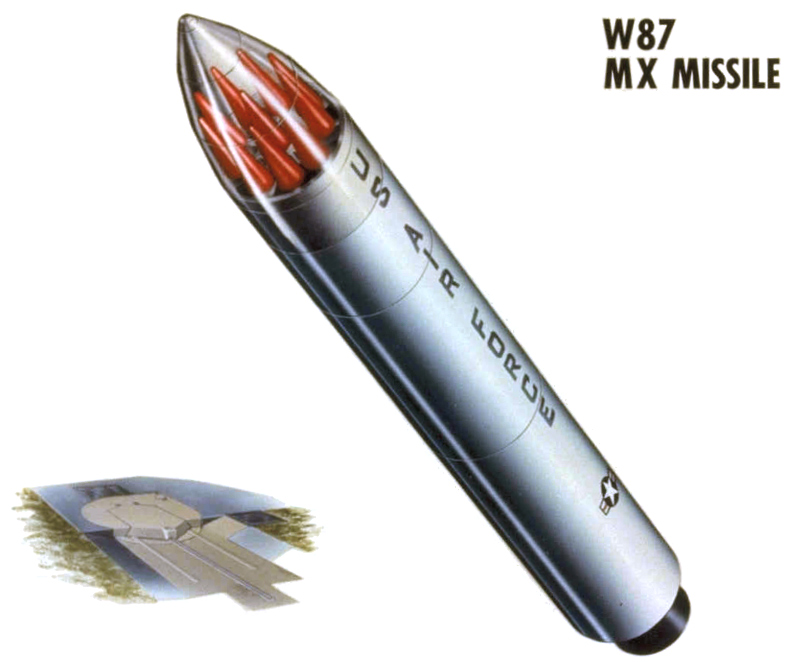
Conclusion
India’s SLBM program, which began with development of the K-15, and is proceeding with development of K-4, K-5, and in future, possibly K-6 as well, is creating a whole host of spin off variants of these missile for missions as disparate as conventional land attacks, antisubmarine missions, antiship missions, antisatellite missions, possibly launching scramjet powered hypersonic cruise missiles, and even launching of minisatellites. These missions benefit from the compact size of the K series of missiles, which was necessary for their accomodation in submarine. It means they can be stored and transported more easily than the legacy Agni series. The K series are also said to use a more efficient fuel than the Agni series.
Using the K series of missiles as platforms for these missions is also economical for India, compared to developing separate missiles for these missions from scratch. The SMART and the ASAT missiles have already been shown to the public. And seeing this approach by India, it will be interesting to see the other variants of these missiles as they are tested and inducted in future. This is certainly a thrilling time for the Indian missile program.
Update 30-09-2021
An image of what appears to be a truncated version of the K15 family of missiles has come out in public domain, and there is speculation that it might be used in ship launched/ground launched antiship/ground attack role.
